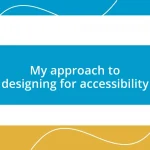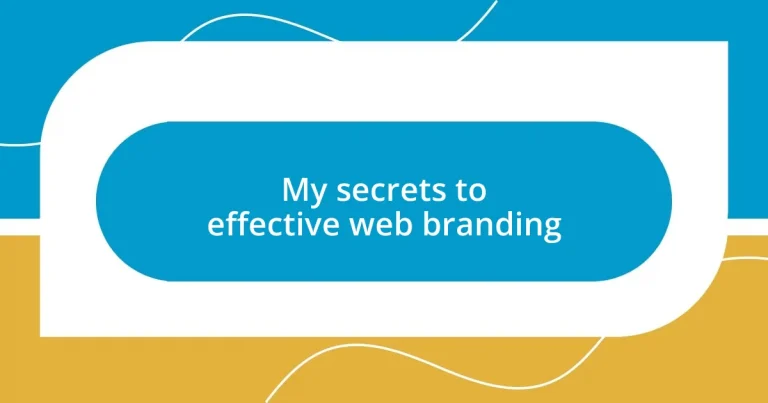Key takeaways:
- Understanding your brand identity involves reflecting on core values and customer feedback to resonate authentically with your audience.
- Defining a target audience through segmentation enables tailored marketing strategies that enhance engagement and loyalty.
- Creating a unique value proposition (UVP) that communicates emotional benefits can differentiate your brand and connect with customers.
- Consistent visual elements and authentic social media engagement strengthen brand recognition and foster long-term customer relationships.
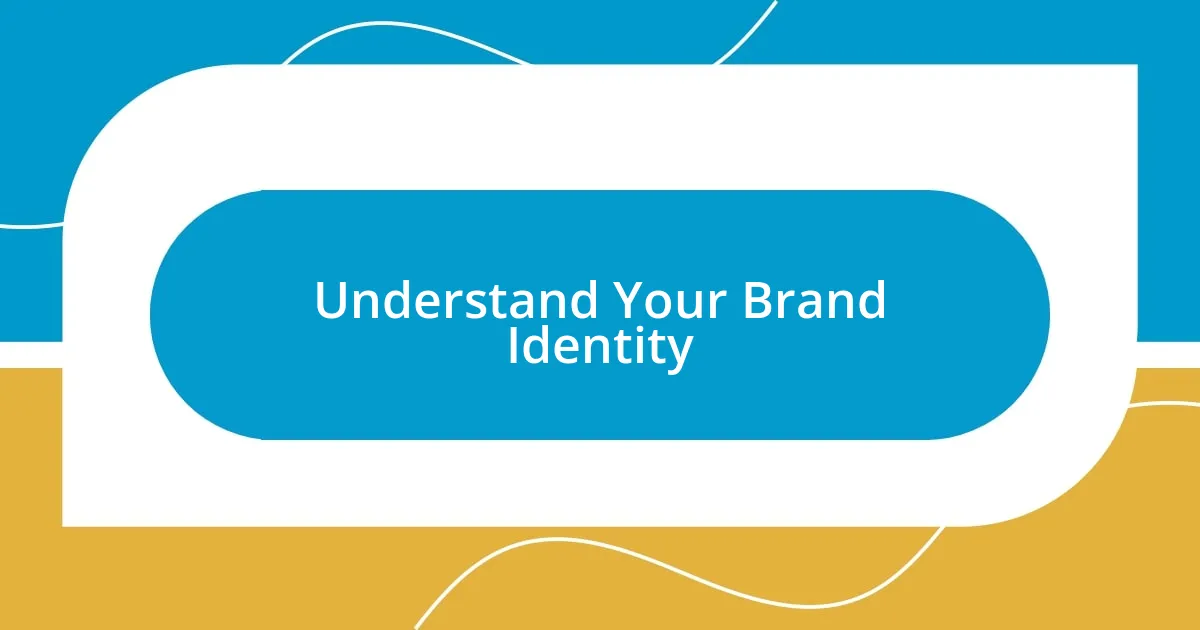
Understand Your Brand Identity
Understanding your brand identity is like holding a mirror up to your business. I remember when I first launched my brand, I struggled with articulating what we stood for. One late night, after a long brainstorming session, I discovered that our core values of trust and innovation were the backbone of my identity, shaping everything from our messaging to our customer interactions.
Have you ever felt lost while trying to define what makes you unique? It’s a common challenge. I used to complicate things by overthinking the visuals and slogans, not realizing that my passion and the mission behind my work were the essence of our brand. Connecting with those fundamental beliefs allowed me to communicate our story authentically, resonating deeply with my audience.
Your brand identity is also about how your audience perceives you; it’s not just an internal exercise. Reflecting on feedback from customers made me realize that they saw us as approachable and friendly. This feedback loop not only clarified my understanding of our identity but also strengthened the bond with my audience. How often do you check in with your customers to understand their view of your brand? Trust me; it’s invaluable.
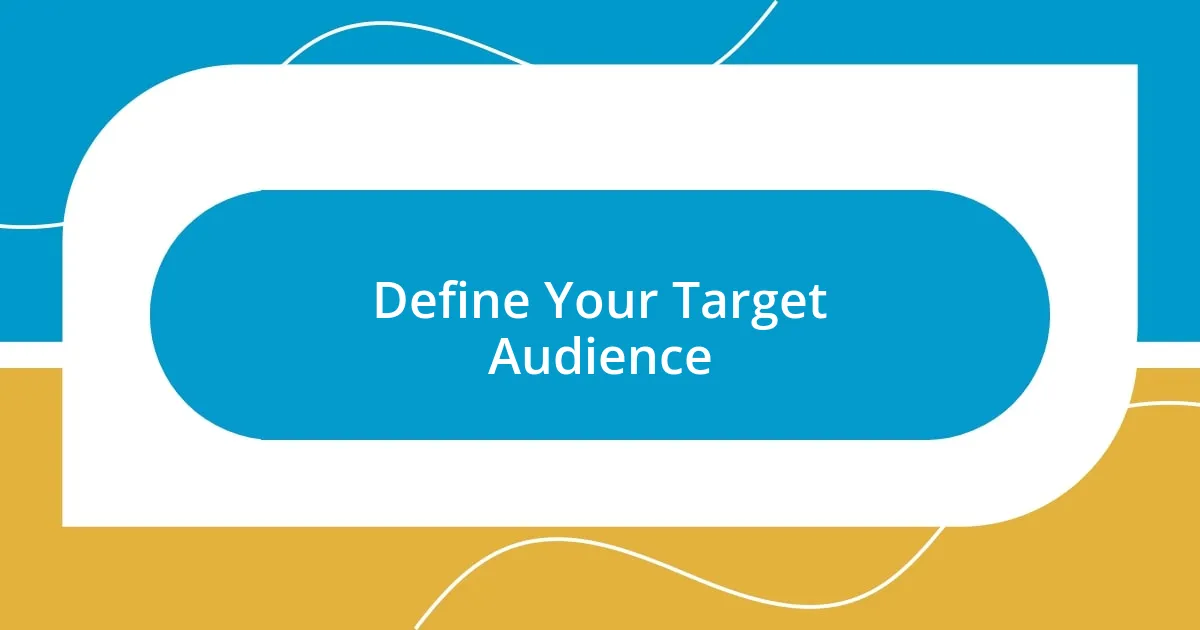
Define Your Target Audience
Defining your target audience is the backbone of effective web branding. When I first started crafting my online presence, I found myself trying to appeal to everyone. It wasn’t until I hosted a few focus groups that I realized I needed to narrow my scope. Those small dialogues opened my eyes to the demographics and interests of my ideal customers, enabling me to tailor my messaging and visuals specifically for them.
Have you ever thought about who truly benefits from your offerings? That’s a pivotal question. Initially, I neglected to consider the uniqueness of my audience’s preferences, which left my branding a bit scattered. It was only after engaging with them through surveys that I found patterns in their feedback, leading to a more cohesive brand narrative that resonated on a personal level. I learned that understanding your audience isn’t just about demographics; it’s about hearing their hopes and challenges.
Lastly, segmentation can often guide your brand’s strategy. By categorizing my audience into distinct groups—like age, interests, and buying behaviors—I was able to design targeted campaigns that felt personal. This shift in approach transformed my brand’s messaging from generic to sincere. When you create content that speaks directly to your audience’s needs, it builds a connection that lasts. Have you segmented your audience yet? If not, starting today could elevate your branding efforts significantly.
| Factor | Defined Audience | Undefined Audience |
|---|---|---|
| Engagement | High engagement based on relevant content | Low engagement due to generic messages |
| Targeting | Targeted marketing strategies | Wasted resources on broad campaigns |
| Brand Loyalty | Stronger emotional connections | Weak connections and high churn rate |
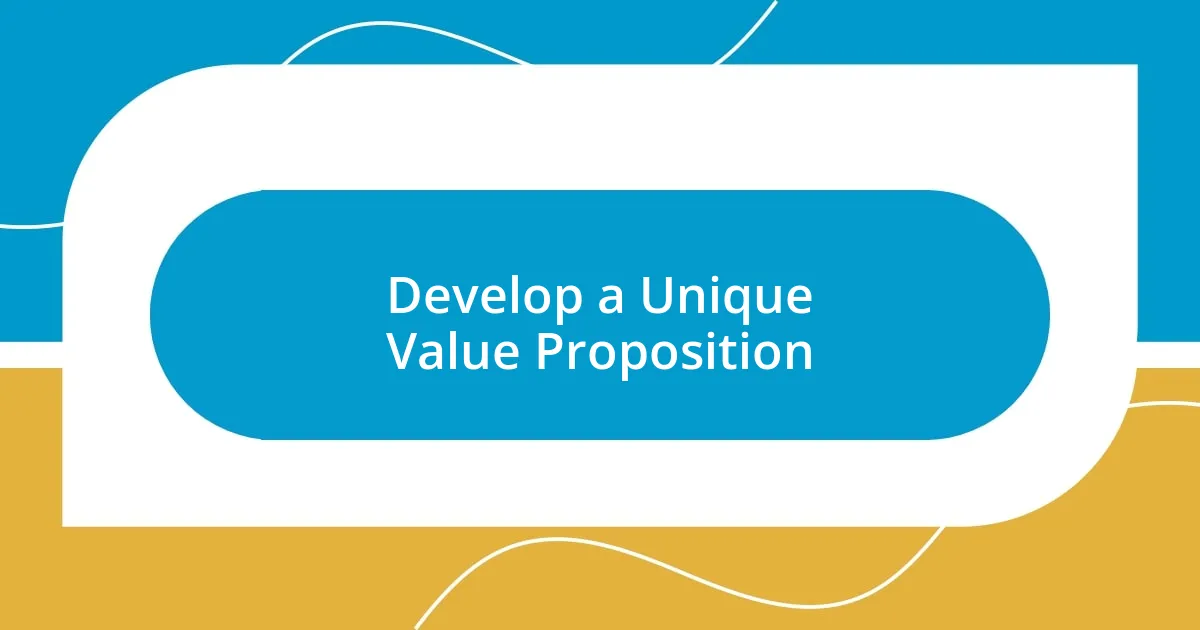
Develop a Unique Value Proposition

Develop a Unique Value Proposition
Crafting a unique value proposition (UVP) has been a game changer for my branding journey. Initially, I was overwhelmed by the sheer number of competitors in my niche. It wasn’t until I started jotting down what set my business apart—like my personalized customer service and eco-friendly practices—that I realized these aspects could become my UVP, making my brand memorable and relatable. Understanding how to communicate this clarity can turn casual visitors into loyal customers.
- A compelling UVP should articulate what your brand offers that others don’t.
- Focus on the emotional benefits of your product or service—how does it make your customers feel?
- Test your UVP with real customers; their feedback can refine your messaging.
- Keep it succinct; a clear statement captures attention better than a lengthy explanation.
I remember feeling a rush of excitement when I finally nailed down my UVP after weeks of trial and error. When I shared it with a focus group, their enthusiastic responses validated my efforts. It dawned on me that a solid UVP doesn’t just describe what you do; it tells a story that connects with the human experience, revealing the why behind your brand. Looking back, have you taken the time to explore what truly makes your business unique? Trust me, doing so can redefine how you connect with your audience.
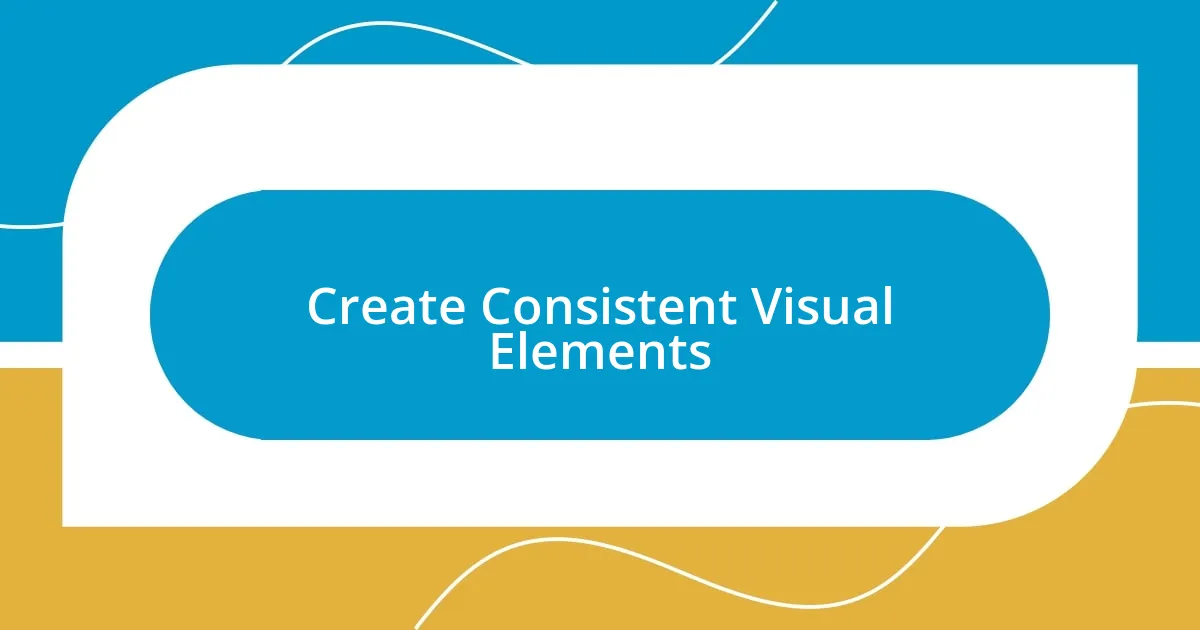
Create Consistent Visual Elements
Creating consistent visual elements has been a pivotal step in what I consider successful web branding. When I first crafted my brand identity, I struggled with varying colors and fonts across different platforms. It dawned on me that inconsistency not only confused my audience but also diluted my brand’s message. Have you ever noticed how a singular color palette can evoke specific feelings? For me, choosing a consistent color scheme brought a reassuring familiarity to my brand that resonated deeply with my audience.
Moreover, I learned that design isn’t merely aesthetic; it tells a story. I vividly remember the shift in engagement when I started using the same style of imagery across my website and social media channels. Those images not only reflected my brand’s personality but also created a visual language that spoke to my audience. It made me wonder, how often do we overlook the power of visuals in conveying our brand’s essence? Each time a visitor encountered my brand, those visuals reinforced my message and fostered recognition, leading to stronger emotional connections.
Ultimately, I believe every element in your brand’s visual identity should work harmoniously. As I aligned my fonts, colors, and imagery, I felt an exhilarating shift in how my brand was perceived. I started to see less of a scattershot approach and more of a cohesive narrative emerging. Isn’t it fascinating how something as simple as consistent visuals can build trust and loyalty? For me, it was an enlightening realization that visual consistency isn’t just a design choice; it’s a deliberate strategy that bridges the gap between the brand and its audience.
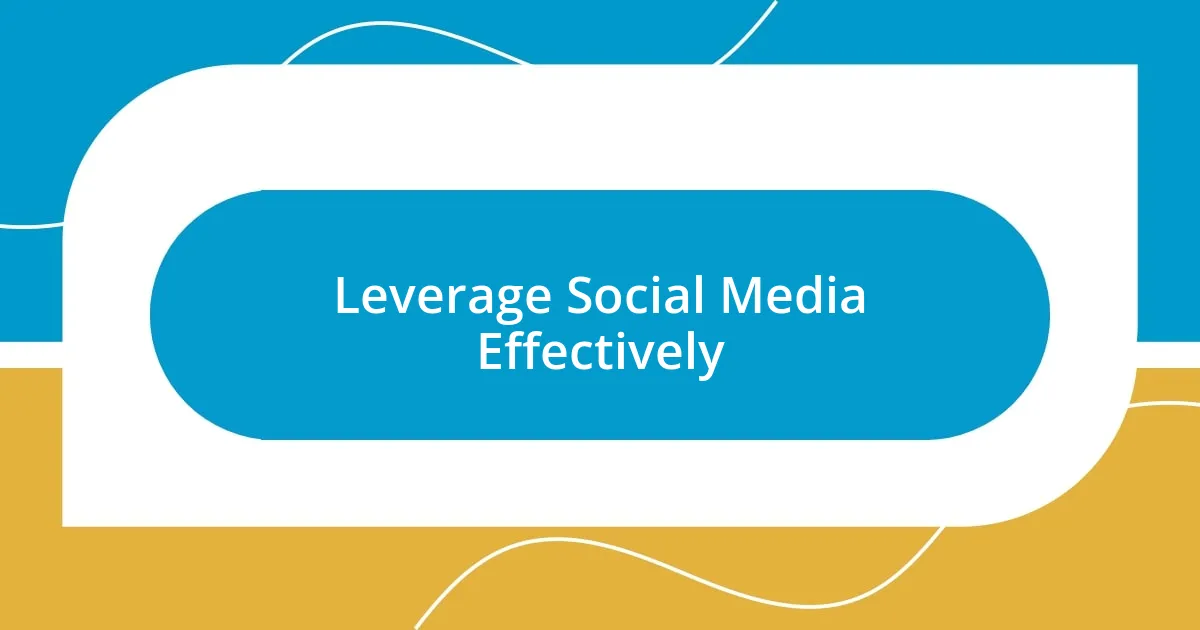
Leverage Social Media Effectively
Leveraging social media effectively is more than just a presence; it’s about authentic engagement. When I first started using platforms like Instagram and Twitter, I remember feeling overwhelmed by the noise. My breakthrough came when I began sharing not just promotional content but genuine stories from my journey. Sharing behind-the-scenes glimpses allowed my audience to connect with me on a personal level. Have you thought about how storytelling can transform your interactions with followers?
Additionally, I discovered that consistency is key. Regularly posting content that aligns with my brand’s voice helped establish recognition and trust. I learned the hard way that sporadic posting left my audience confused and disengaged. Once I committed to a posting schedule, I noticed an uptick in interaction. It made me wonder—how often do we underestimate the power of showing up consistently for our audience?
Another aspect I embraced was community building. I actively engaged with my followers by responding to comments and asking for their opinions. I recall the day I conducted a poll asking for feedback on a new product idea. The overwhelming participation not only inspired me but also fostered a sense of belonging among my fans. Building a community around your brand creates loyal advocates who help amplify your message. Isn’t it rewarding to think about how authentic engagement can turn casual followers into passionate customers?
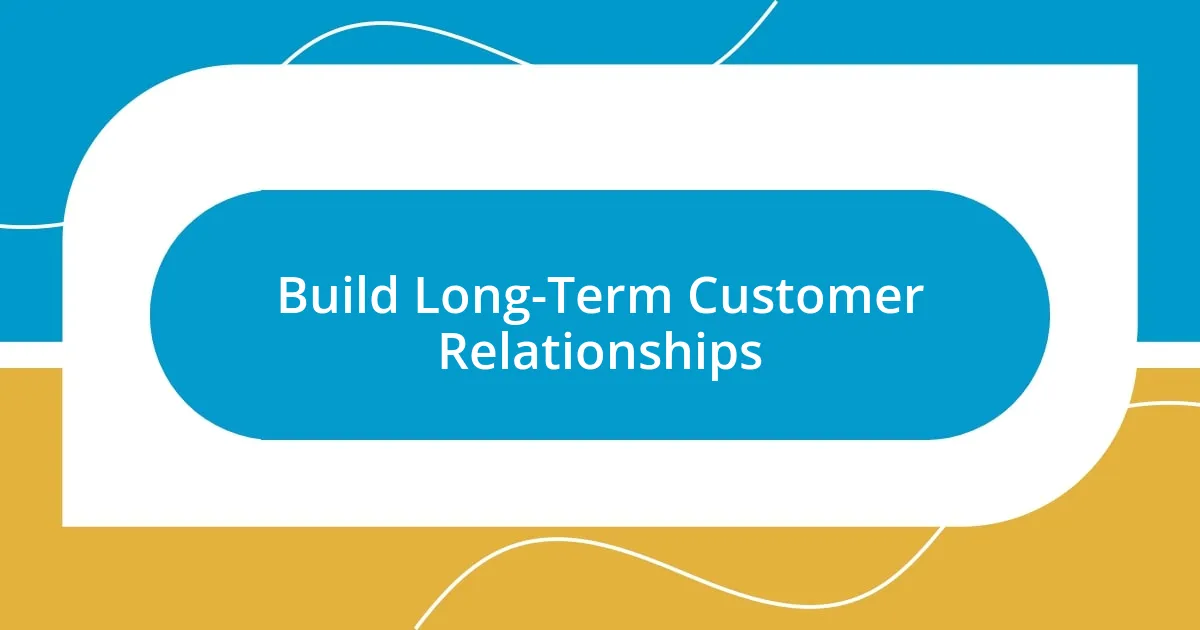
Build Long-Term Customer Relationships
Building long-term customer relationships is central to branding success, and I can tell you that it takes effort and authenticity. When I consider the interactions I’ve had with my customers, I realize that it’s those genuine responses that make the most impact. For example, I once replied to a customer’s comment about a product they loved, and it turned into a heartwarming exchange. That simple act of engagement turned a one-time buyer into a loyal supporter. Have you ever experienced that warmth when a brand genuinely values your opinion?
I’ve come to understand that consistent communication is just as important in nurturing these relationships. After noticing a decline in customer interactions for a brief period, I decided to reach out through personalized emails. I couldn’t believe how many responses I received! Customers appreciated the personal touch and shared their stories about how my products fit into their lives. It made me think, how often do brands overlook the power of a simple check-in?
Moreover, I learned that loyalty programs can work wonders in reinforcing these connections. When I introduced a rewards system that acknowledged repeat customers, I saw not only increased purchases but also heartfelt messages expressing their appreciation. It’s incredible to think that a small incentive can build a bridge of trust. Isn’t it amazing how investing in your customers can lead to a thriving community around your brand?










